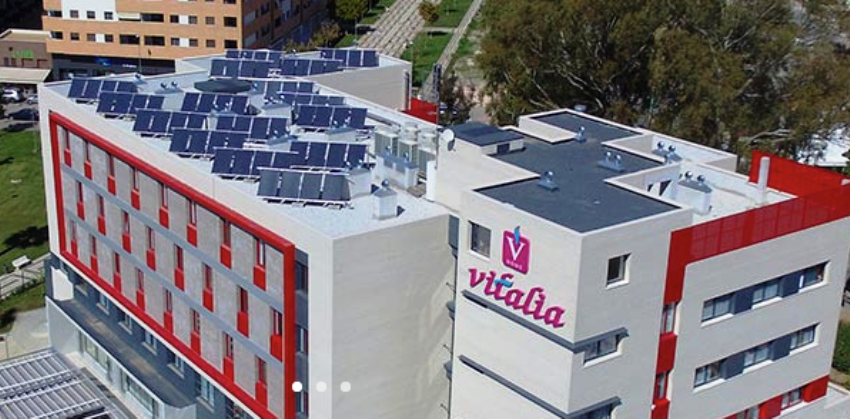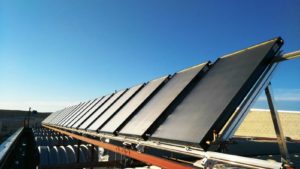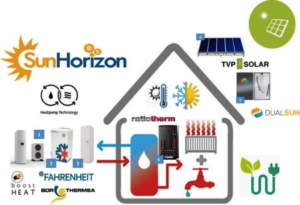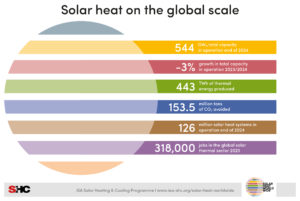PVT and seasonal storage: innovative technologies in Spain
November 15, 2018
Abora manufactures glazed PVT panels, which consist of monocrystalline cells that are laminated together with a copper absorber. The absorber has a selective Tinox coating because a small portion of irradiation penetrates the PV cells and reaches the absorber surface.
To increase efficiency, the hybrid components feature the use of an inert gas between the PV cells and the glass cover, as well as some treatments, to decrease reflection and heat loss (from convection, conduction and radiation). The PVT parts have also been insulated on the back.
Del Amo said: “Thanks to this innovative device, we can achieve payback periods of between 5 and 6 years without incentives. This means that our solutions are not only suited for new, larger residential buildings but also existing ones, where users usually require measures with a fast return on investment.”
|
|
PVT system |
|
|
|
aH60 |
aH72 |
| Gross area |
1.65 m2 |
1.96 m2 |
| Weight |
43 kg |
50 kg |
| Photovoltaic peak power |
260 Wp |
300 Wp |
| Collector efficiency |
0.59 |
0.59 |
| Stagnation temperature |
155 °C |
150 °C |
| No. of hydraulic connections |
4 |
4 |
One key approach to fulfil Abora’s vision for the market is to be more ambitious when it comes to the role of solar heat: In a typical residential building in Spain, occupants need 80 % of total heat demand for space heating and only 20 % for domestic hot water. “When you look at national building regulations, which set a 50 % renewable heat requirement for hot water use, solar covers only 10 % of all thermal needs,” said del Amo.
It was the main reason behind the company’s decision to offer solutions with seasonal heat storage, which allows for higher solar fractions and provides heat in buildings such as schools, where consumption is low in summer.
The company’s strategy for the market lists seasonal storage as a plus also for those customers who are not focused that much on maximising profitability but rather on meeting nearly all of their needs by renewable energy.
A seasonal buffer storage tank will be one key feature in four projects which are already in the pipeline and will be developed by Abora over the next two or three years: Two of them will be carried out in Saragossa – at the British School and the local university’s faculty of philosophy. The third will supply energy for a sports centre in the region of Catalonia and the last is going to be installed at the Tobazo Hotel close to the French border.
Another plan worth mentioning is a three-phase project developed for a business producing prefabricated houses. During the first phase, 112 PVT collectors will be installed to provide thermal energy for a radiant heating system at company offices. Next summer, they will also be connected to a 30 kW adsorption chiller, which will meet part of the cooling needs. During the third phase, waste heat produced by the chiller will be transferred to a heat pump to raise the temperature from 30 °C to 60 °C and heat a thermal storage system.


